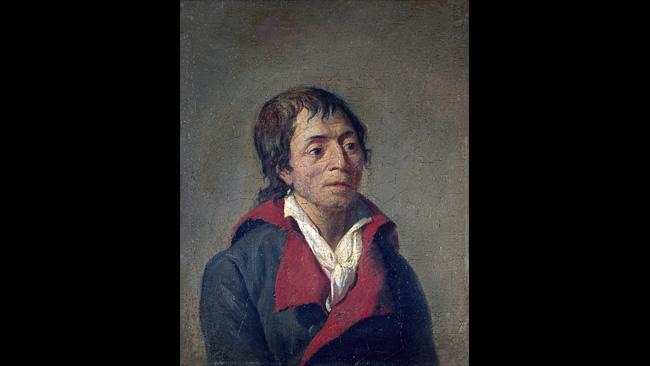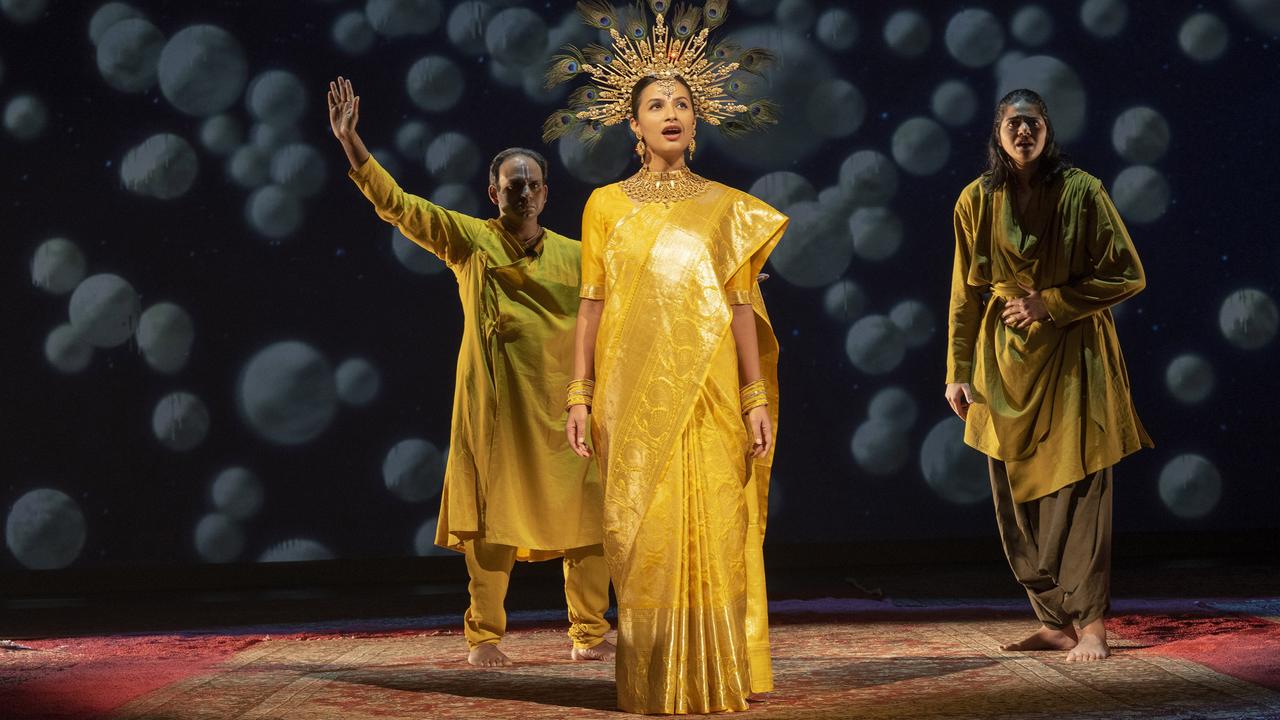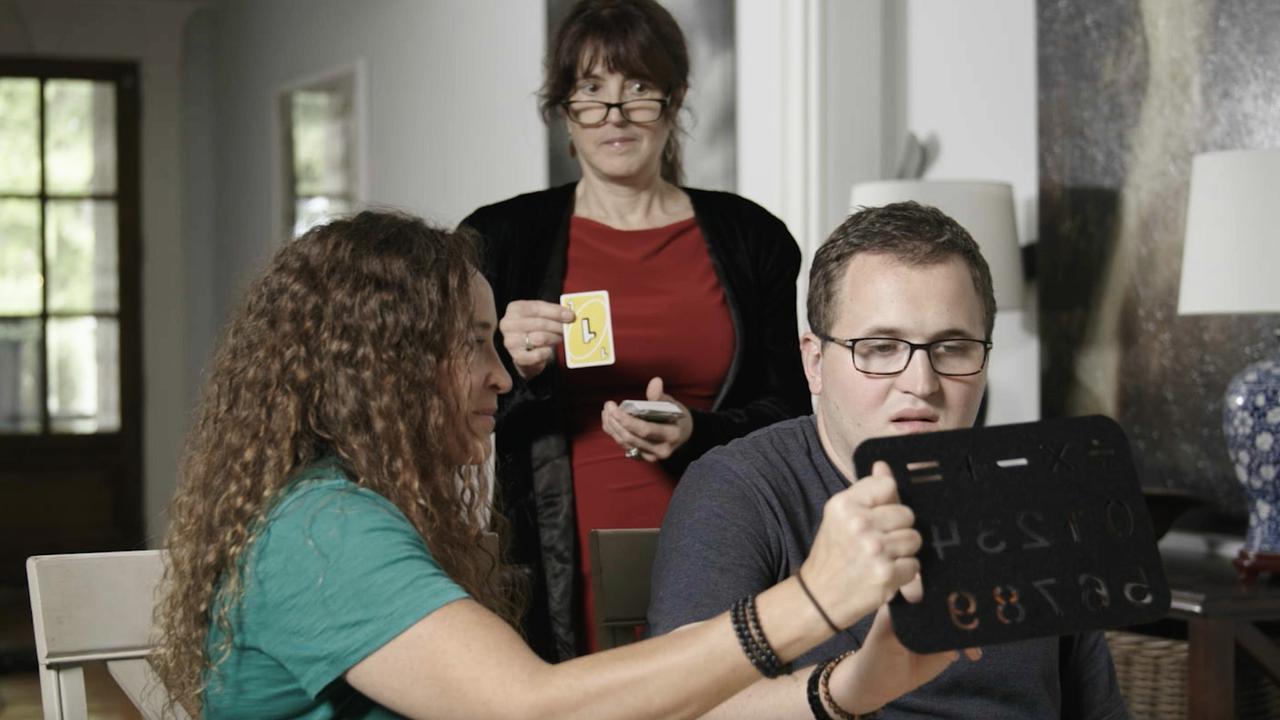Napoleonic adventures at the National Gallery of Victoria
THE National Gallery of Victoria's Napoleon exhibition comes to Australia in the anniversary year of the emperor's fateful decision to invade Russia.

THE National Gallery of Victoria's Napoleon exhibition - the latest in its series of winter blockbusters - comes to Australia in the anniversary year of the emperor's fateful and, as it proved, ultimately fatal decision to invade Russia (a mistake that was to be repeated, even more incomprehensibly, by Hitler more than a century later).
The hollow victory at Borodino was followed by the burning of Moscow and the disastrous retreat through the Russian winter, in which 380,000 men lost their lives. Although the emperor was still capable of winning battles against his enemies in the years that followed, his forces were crippled by the enormous losses, and his image of invincibility was destroyed. He was forced to abdicate in 1814 and was exiled to the island of Elba off the Tuscan coast; he returned in 1815, but the famous Hundred Days ended with defeat at Waterloo and years of exile to St Helena in the Atlantic Ocean until his death in 1821.
France was left shattered both economically and psychically. Alfred de Musset, in La Confession d'un enfant du siecle (1836) recalls the gloom and humiliation that overwhelmed the generation growing up in the years after Waterloo, when the heroic dreams of the Napoleonic period were in ashes and life seemed to hold nothing but mean and ignoble scrabbling for economic survival. The Romanticism that flourished in French art and literature in these years, unlike its earlier English and German expressions, was imbued with darkness and pessimism.
The Napoleonic adventure had arisen out of the French Revolution, which Edmund Burke had correctly predicted would end in a dictatorship. Burke had supported the American revolutionaries on the grounds that they were simply Englishmen demanding rights that had been unjustly denied them, but understood that the French Revolution was a very different affair, a collapse of social order that could lead only to violence and eventually the domination of a man powerful enough to impose himself.
The horror of the revolution is evoked in the first section of the exhibition, with images of Louis XVI and Marie-Antoinette both in happier times and in prison. Perhaps the most moving images in this section are the miniature portraits of an aristocratic couple, pale and drawn, in their prison cells with barred windows in the background. Such portraits were commissioned by those who knew they were going to die, in order to leave some memento to family and friends. Nearby is another miniature, of the queen's friend and confidante the Princesse de Lamballe, who was murdered in 1792, her body defiled and her head paraded on a pike outside Marie-Antoinette's prison.
The French Revolution and the ensuing Reign of Terror became the prototypes of an evil that was to be mythologised over the next two centuries by zealots who set their political millenarianism above civilisation and humanity. The revolutions of the 20th century inevitably led to systematic murder in the name of ideology, and the unbridling of the rage of the basest members of society.
You get some idea in the mean and stupid features of an anonymous revolutionary whose portrait hangs in this section: the sort of man who would denounce his neighbours or his business rivals for his own advantage while mouthing the official slogans. Nearby is a small portrait of one of the butchers of the Terror: Jean-Paul Marat, whose graceless features make such an instructive contrast with the heroic icon of his martyrdom fabricated by Jacques-Louis David.
David, who was a talented artist but a weak man easily swayed to political hysteria, idolised both Marat and Robespierre. In this picture - one of several copies of the original in the Musees Royaux des Beaux-Arts at Brussels - he has combined the illusion of realism, contrived through the documentary reproduction of the murder weapon, Charlotte Corday's letter and other details, with a formal simplification in the composition that derives generally from the French classical tradition and specifically from a minor ancient relief.
When the Terror ended with the fall of Robespierre, his friend David was jailed for a time. The revolutionary government was replaced with the regime of the Directoire, under which Napoleon first came to prominence. The exhibition includes the portrait of the young general leading his troops across the bridge at Arcole, in northern Italy, by David's pupil Antoine-Jean Gros.
The Directoire, partly hoping to interfere with British trade routes and assist the revolt of Tippoo Sahib in India, and partly wanting to get rid of an increasingly popular young officer, sent Napoleon to conquer Egypt. He landed at Alexandria, marched across the desert to Cairo and defeated the Mamelukes, but Admiral Nelson destroyed his fleet at Aboukir and left the French army stranded. The most enduring result of the Egyptian adventure was the enormous impetus it gave to modern Egyptology (Champollion was to decipher the hieroglyphs in 1822) and the fashion for Egyptian designs, which became an important component of the Empire style.
David himself painted the greatest image of Napoleonic propaganda, one that is so convincing and full of life we almost forget it is propaganda. On his second invasion of Italy (1800), Napoleon, now first consul of the Directoire, decided to catch the Austrians by surprise by marching across the Alps. He was following in the footsteps of Hannibal and Charlemagne, whose names are inscribed on the rock beneath his horse, although outshone by the newly carved Bonaparte.
Returning to France, Napoleon overthrew the Directoire on the date known as the 18 Brumaire in the revolutionary calendar, which had renamed the months as well as resetting the year count to zero, a conceit later copied by the fascists. When his nephew Louis-Napoleon staged his own coup in 1851, Marx wrote the ironic pamphlet titled The 18th Brumaire of Louis Bonaparte (1852), in which he famously commented that everything in history happens twice, the first time as tragedy and the second time as farce.
Napoleon went on to make himself emperor, avoiding, as his Roman precursors had done, the tainted title of king, and yet asserting an even more unqualified power than the monarchs of the ancien regime had enjoyed.
David was again called upon to immortalise the coronation of the new emperor, which Napoleon, ever sensitive to historical symbolism and wanting to recall the papal anointing of Charlemagne in the year 800, had performed by the unfortunate Pope Pius VII. He had restored the Catholic faith, theoretically abolished by the Revolution, in 1801, and now forced the pope to come to Paris for a ceremony at Notre Dame.
This is one of the most interesting parts of the exhibition, because it includes not only a portrait study and a compositional drawing by David, but a series of watercolours by Fontaine of the setting for the ceremony, like a stage designer's sketches for a theatrical production. These watercolours help one to understand more clearly the interior represented in David's enormous finished painting.
Most significantly, one of Fontaine's drawings shows Napoleon kneeling before the pope, who is anointing him - exactly as the ceremony was intended to take place. What in fact happened was a spectacular and completely unexpected coup de theatre. As the pontiff was placing the crown on Napoleon's head, the emperor took hold of it, stood up and placed it upon his own head, thus simultaneously securing the papal mandate and blessing, yet demonstrating publicly that the real power was literally in his own hands.
This is what is represented in the complete compositional drawing by David: the emperor has turned his back on Pius VII, who lifts his hands in surprise, and faces the audience as he raises the crown above his own head. But no doubt either Napoleon himself or his advisers felt this action was better repeated as a legend than pictured as an image; it could appear brash or even vulgar. Instead, the final painting immortalises the more dignified sequel, in which Napoleon himself crowns the kneeling Josephine, while the pope looks on.
One important strand to the exhibition is the connection with Australia, which starts with the expedition of La Perouse under Louis XVI and continues with the Baudin expedition to Australia, which resulted in important publications and the bringing back to Europe of about 120,000 specimens of flora and fauna. Among these were living animals such as the kangaroos and black swans that went to live in the park around Napoleon and Josephine's residence at Malmaison.
The Australian connection extends to a family that Napoleon befriended on St Helena, and who later moved to the Mornington Peninsula near Melbourne, as well as a copy of Cook's travels that was among the books he took with him into exile. But the Australian theme could have been better integrated than it is, and should perhaps have been treated as a separate section, instead of re-appearing in a way that simply underlines how far we were from the centre of history.
Apart from that, the works I have discussed are scattered through a vast array of furniture, costumes, military uniforms and porcelain. This seems to be something of a pattern with the Winter Masterpieces exhibitions. It was certainly the case with last year's Vienna show, where the paintings sometimes seemed to be included more as illustrations of style or parallels to the decorative art objects than to be telling a story of their own. Of course the costumes and furniture and cups and saucers are interesting in their way, and perhaps particularly appealing to audiences less concerned with art and history than with design. I recall the delightful opening of Charles Lamb's essay, "I have an almost feminine partiality for old china." We may not all share that interest, but there is one set of ceramic wares that cannot be ignored.
It is part of a magnificent service that the fallen emperor took with him to St Helena; a series of dessert plates each of which is painted with views of Paris and other cities, such as Venice and Alexandria. Napoleon did not eat from these plates any longer, but he often handled them and pondered them. There is an irresistible pathos in picturing him, in exile, dwelling on these bright images, like memories, of places once ruled and scenes of military triumphs.
Napoleon: Revolution to Empire
National Gallery of Victoria, Melbourne, to October 7



